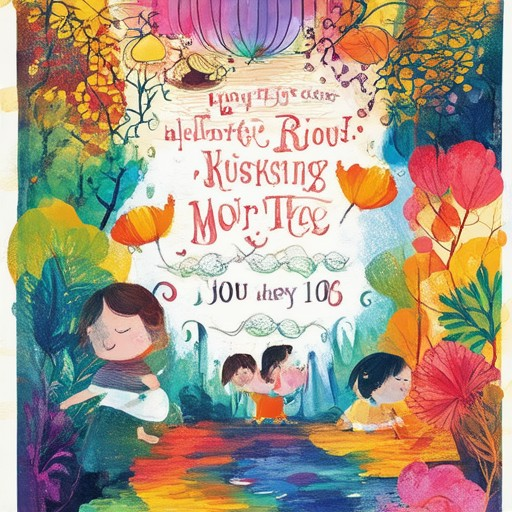In the realm of nonprofit storytelling, the power of compelling narratives can transform awareness, inspire action, and drive meaningful change. Whether you’re crafting tales to captivate donors, motivate volunteers, or amplify your mission’s impact, effective storytelling is a cornerstone of successful nonprofit communication. From mastering the 5 Cs of storytelling—Character, Context, Conflict, Consequence—to exploring the 4 Ps—Plot, Perspective, Purpose, Potential—this guide delves into the essential elements that will help you craft stories that resonate deeply with your audience. By leveraging these strategic frameworks, you’ll unlock the ability to create nonprofit storytelling that not only engages but also fosters lasting connections, ultimately advancing your organization’s goals. With insights rooted in proven practices and real-world examples, this exploration of nonprofit storytelling tips will equip you with the tools to tell stories that inspire and achieve.

What Are the 5 Cs of Storytelling?
The 5 Cs of storytelling are a powerful framework used to analyze and create compelling narratives. These elements work together to engage audiences and communicate effectively:
- Conflict : Every great story begins with a conflict or problem that the protagonist must solve. This creates tension and drives the narrative forward.
- Character : Relatable and multi-dimensional characters are the heart of any story. They must evolve throughout the plot to resonate with readers.
- Context : The setting and background of the story provide essential details that shape the characters’ actions and the overall plot.
- Cause : The underlying motivations and events that lead to the conflict are crucial. They establish the stakes and purpose of the story.
- Consequence : The outcomes of the story reveal the impact of the characters’ actions and the themes explored.
By focusing on these five elements, storytellers can craft narratives that captivate audiences and convey meaningful messages effectively.
What are the 4 P’s of storytelling?
The 4 P’s of storytelling are:
- P reparation: This involves planning and gathering all necessary materials, researching the subject, and outlining the story.
- P resentation: This refers to how the story is delivered, including the use of visual aids, tone, and style.
- P erformance: This is about effectively communicating the story to the audience, engaging them, and making it memorable.
- P practice: Regularly rehearsing and refining the story to ensure it is polished and effective.

How to Effectively Tell Your Non-Profit Story
Telling your non-profit story is a powerful way to connect with your audience and communicate your mission. Here’s a step-by-step guide to crafting an engaging narrative:
- Understand Your Audience:** Identify who your primary audience is—whether it’s potential donors, volunteers, or partners—and tailor your story to resonate with their interests and values.
- Highlight Key Moments:** Showcase your organization’s mission, vision, and achievements. Whether it’s successfully completing a project, raising funds, or impacting lives, highlight these successes to demonstrate credibility and effectiveness.
- Build Emotional Connections:** Make your story relatable by sharing personal anecdotes or testimonials. This humanizes your organization and creates a deeper bond with your audience.
- Use Visuals Wisely:** Incorporate visuals like photos, videos, or infographics to enhance your story. While written content is the focus, visuals can complement and reinforce your narrative.
- Structure Your Story Effectively:** Begin with an engaging hook to capture attention, followed by an introduction to your mission. Transition smoothly through key moments, achievements, and emotional narratives. Conclude with a clear call to action or invitation to support your cause.
- Be Authentic and Transparent:** Share both your successes and challenges to build trust and authenticity. This approach makes your story more believable and relatable.
- Optimize for SEO:** Use relevant keywords and phrases to ensure your story is easily discoverable. Integrate links to other relevant pages on your website to enhance navigation and SEO performance.
- Encourage Reader Engagement:** End your story with a compelling message about the impact of your support. Provide clear options for how readers can get involved, whether through donations, volunteering, or spreading the word.
By following these steps, you can craft a story that not only communicates your mission but also inspires and motivates your audience to take action. Remember to keep your narrative concise, focused, and cohesive to maximize its impact.

What Are 3 Rules About Storytelling?
- Rule 1: Engage the Audience Immediately
- Rule 2: Develop Relatable Characters
- Rule 3: Craft a Memorable Ending
Grab attention within the first few sentences to hook readers and keep them interested throughout the narrative.
Create characters that resonate with the audience, making it easier for them to connect emotionally with the story.
Leave a lasting impression by concluding the story with a meaningful message or twist that lingers in the mind.
The 5 Pillars of Storytelling
Storytelling is a powerful art form that captivates audiences and conveys meaningful messages. To craft an engaging and impactful story, it’s essential to understand its core components, often referred to as the 5 pillars of storytelling. These elements work together to create a cohesive and memorable narrative.
- Character : At the heart of every great story lies the character. This includes the protagonist, who is often the driving force of the narrative, and the antagonist, who creates conflict and tension. Understanding your characters’ motivations, flaws, and aspirations is crucial for making them relatable and compelling.
- Plot : The plot is the sequence of events that unfold in your story. It should be structured in a way that keeps readers engaged, leading them through a journey that builds toward a climax and resolution. A well-crafted plot ensures that your audience stays invested in the outcome.
- Setting : The setting provides the backdrop against which your story unfolds. Whether it’s a historical timeframe, a fictional world, or a real-life location, the setting helps establish the tone and atmosphere of your narrative. It also plays a role in grounding your characters in a believable environment.
- Theme : The theme is the central message or idea that your story communicates. It often reflects broader societal issues or personal truths. Identifying and clarifying your theme allows you to ensure your story resonates on a deeper level with your audience.
- Conflict : Conflict is the driving force that propels your story forward. It could be an internal struggle for your protagonist or an external challenge they face. Without conflict, your story lacks direction and interest.
By mastering these five pillars—character, plot, setting, theme, and conflict—you can create stories that resonate deeply with your audience and leave a lasting impression. Whether you’re crafting a novel, a short story, or even a presentation, understanding these elements will help you tell your story more effectively.

What Are the 4 Types of Storytelling?
Storytelling is a powerful tool used across various industries to convey messages, engage audiences, and inspire action. Understanding the different types of storytelling can help you choose the most effective approach for your needs. Below, we outline the four primary types of storytelling:
- Narrative Storytelling
This type focuses on sharing a sequence of events that occur in chronological order. It’s often used to communicate historical events, personal experiences, or fictional stories. Examples include biographies, historical accounts, and novels. - Dramatic Storytelling
Dramatic storytelling involves creating a vivid scene or situation to capture the audience’s attention. It’s often used in theater, film, and live performances. This type relies heavily on emotions, conflict, and character development to keep the audience engaged. - Situational Storytelling
Situational storytelling occurs when a story is tied to a specific moment or setting. It’s commonly used in advertising, marketing, and public speaking to connect with the audience’s immediate circumstances. For example, a speech about climate change might begin with a vivid description of a polluted environment to grab attention. - Epical Storytelling
Epical storytelling is grand in scale, often involving myths, legends, or epic tales that span generations. These stories are meant to inspire awe, wonder, and moral lessons. Examples include myths from Greek mythology or historical epics like “Beowulf.”
By understanding these types, you can tailor your storytelling techniques to suit your audience and goals. Whether you’re crafting a compelling presentation, writing a novel, or delivering a speech, choosing the right type of storytelling can make all the difference in how your message is received.
For more resources on storytelling techniques and their applications, visit our NPO Expert website.





0 Comments